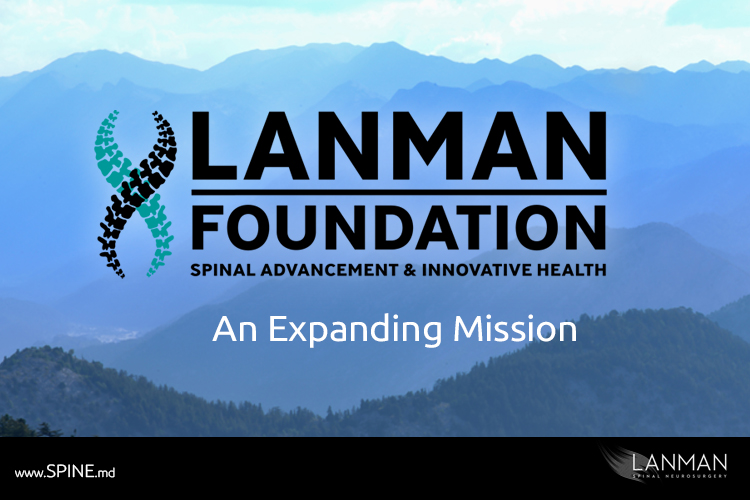My instrument to make a lasting and meaningful contribution to the wellness of others.
How we would all like to feel that we add lasting and meaningful value to our community. Want to shoot even higher? How about the condition of humanity?
There are many ways for us to contribute. We can donate money to our favorite nonprofits and volunteer for charities. We may work in ways that we think are important. But, every time I’ve contributed, I posed a question to myself: “how will I make THIS contribution lasting and meaningful?”
It’s a question that I think we all should ask ourselves if only to help explore our intentions. I’m not saying that all contributions must be purely beneficent. But on the critical issues, I think that’s where the question requires more focus.
One place where we can get hung up is on the words “lasting” and “meaningful.” According to the dictionary, “lasting” means enduring and permanent; “meaningful” means significant and consequential. And now, you have the primary mission for what I intended when I founded the Lanman Foundation last year.
To make my action more lasting and meaningful, I envisioned an organization with a specific purpose: preserving spinal function in adults of every age and restoring spinal motion to those affected by the spine and joint disorders.
I’ve deepened my own understanding of what is calling me from my core: to seek the means to gather, evaluate, apply, and disseminate information that will advance the cumulative knowledge of the spine and joint diseases and, in so doing, improve patient outcomes and patient lives.
As a neurosurgeon specializing in the disorders of the spine, and an early advocate of the advancement of progressive spine surgery technology and technique for nearly three decades, the mission had to be significant. As a charitable endeavor, I felt that I had to shoot for goals that are not often talked about in medical journals nor even among patients. But I know that people are thinking about it.
Patients come to me with stories about what they hear from other physicians, and it surprises me how much misinformation is circulating about medical advancements like artificial disc replacement surgery. Even though the FDA has long since approved both the technology and surgical methodology, they still claim that ADR is “experimental.” Many other physicians are quick to recommend spinal fusion when nonsurgical therapies could be far more efficacious. When I hear this and see the patient’s faces, I know in my heart that I’m in the right place at just the right time, for:
The golfer who already had two cervical fusions and was told that she would need a fourth and possibly fifth fusion;
The bicyclist diagnosed with a freshly herniated disc in his neck, told by his physician that fusion was really his only option and that he’d have to quit riding;
The 22-year-old Marine who came back from a tour of duty with severe sciatica and one herniated disc. When told that he’d have to get fused, the young Marine asked about the risk for adjacent disc failure, and the physician said, “that’s not really an issue.”
The fact is, I’ve conducted clinical trial and patient studies on 2nd and 3rd Generation artificial discs, all FDA-approved. Like the innovative M6-C that imitates the physical properties of a natural spinal disc, and the Prestige LP cervical artificial disc that demonstrated statistically significant improvements over spinal fusion. That very same study, with about 400 patients participating, also showed the most unequivocal proof so far that spinal fusion indeed does increase the risk of adjacent disc failure.
My hope is to do more “out of the box” research to preserve mobility and motion with procedures. One of our first steps is to correct the frequency of poor medical advice within the medical community. But we are driven to get the word out to patients that there are always options. For every definitive prescription, there is an opportunity for careful deliberation about the future of our health. Sometimes we must act swiftly to prevent permanent nerve damage or worse. But there’s no reason at all to act precipitously with an indifference to the facts.
Since its inauguration last year, the Foundation has promoted news of medical advancements, technological innovation, and FDA trials. It is actively promoting spine health and motion-preserving spinal technologies. It’s also using the work of my 4D Spinal Research Institute, where I’m working with multidisciplinary healthcare teams to integrate a holistic health approach that considers age, lifestyle, nutrition, physical exercise, and overall health when working with patients.
The Foundation is also reaching out to the United States military vets who have been injured during active duty. We’re actively pursuing the means to provide vets who are having difficulty getting proper medical care, especially for spinal disorders and injuries.
Part of my goal is to build a spine health community, both online in social media and through real relationships between patients, healthcare practitioners in various disciplines, and the greater public. Our aim is to expand awareness on what it means to live with the fullness of health and mobility.
I invite you to consider joining us.







